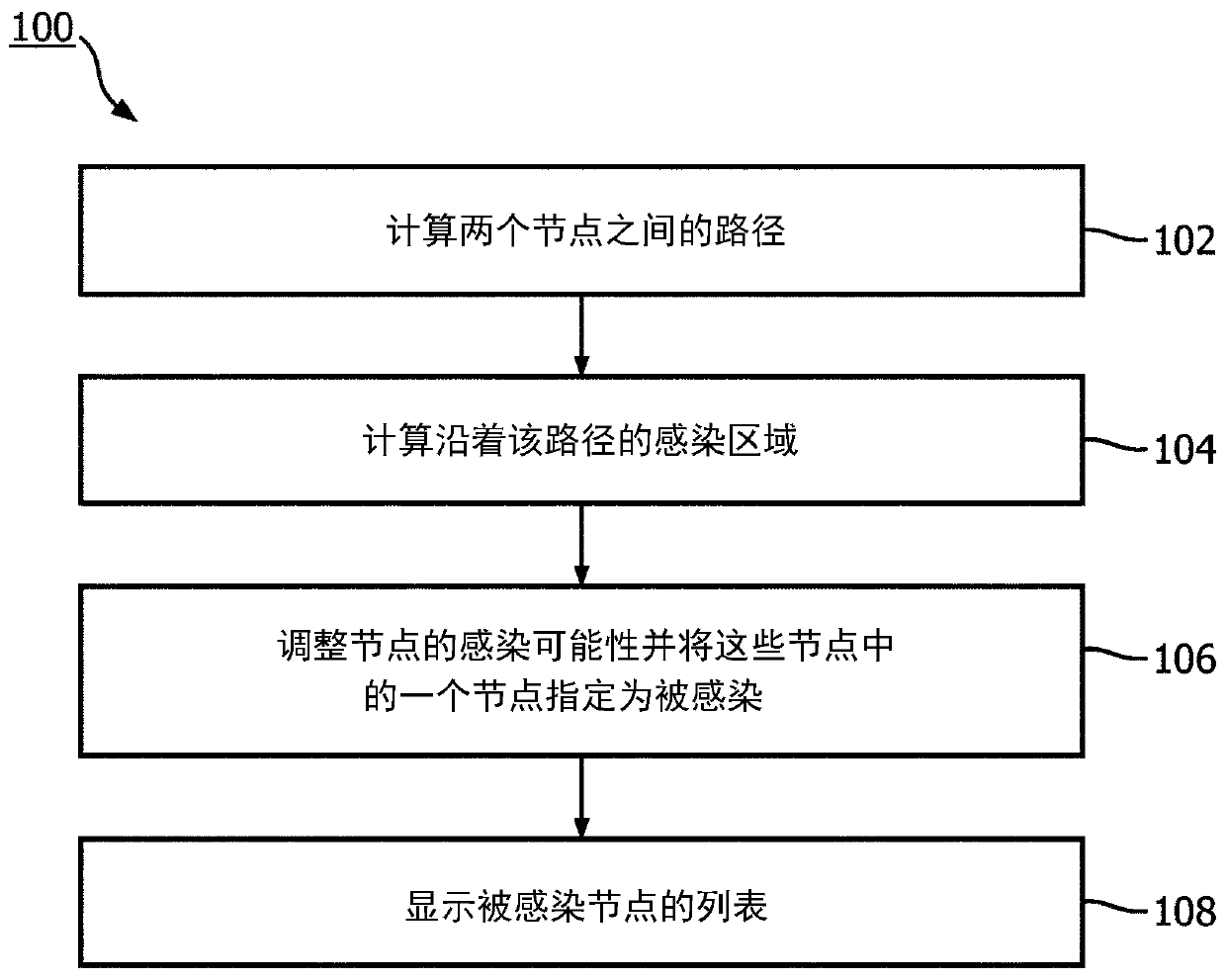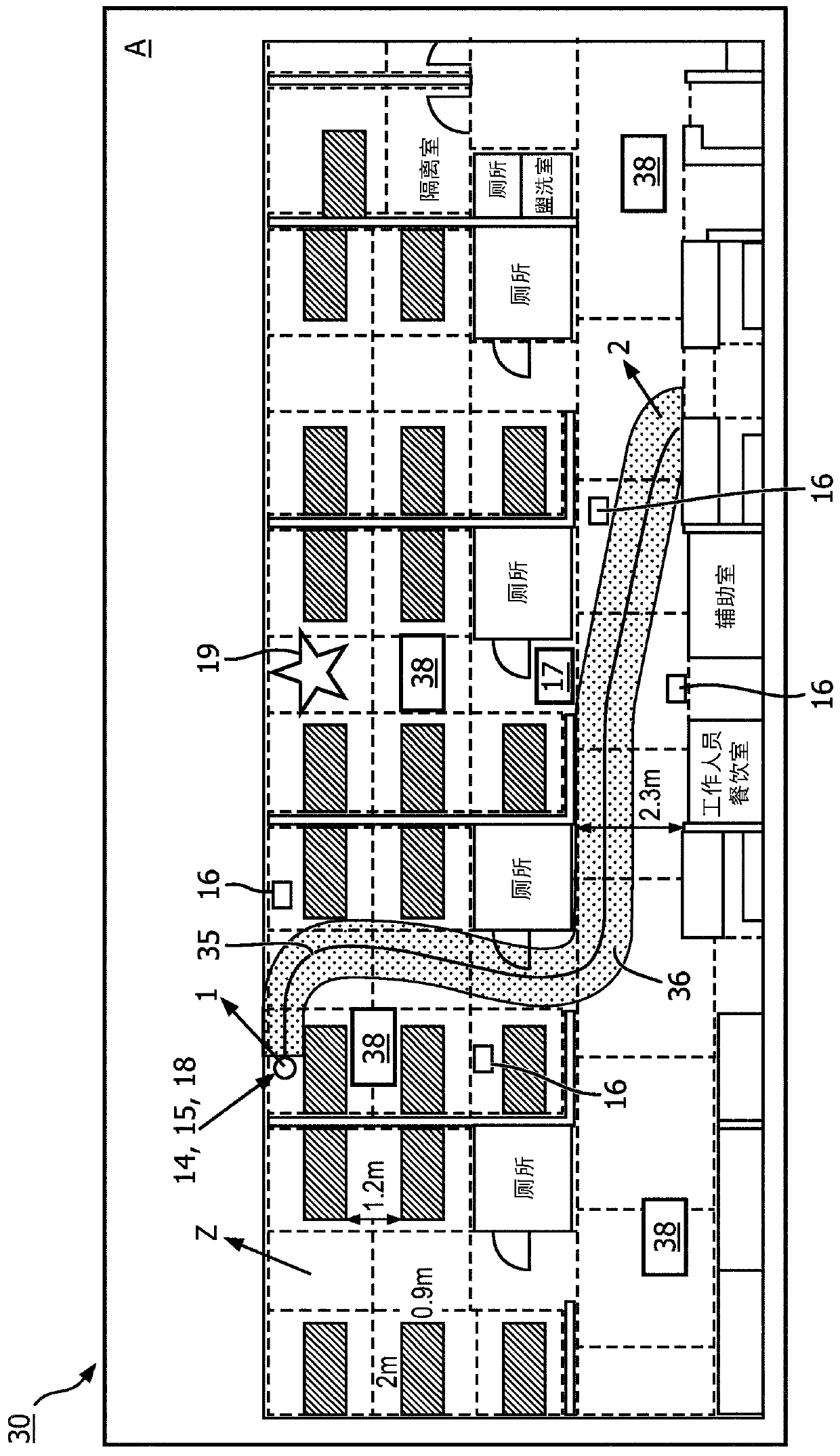Monitoring direct and indirect transmission of infections in healthcare facility using real-time locating system
A real-time positioning and time technology, applied in the field of tracking system and patient monitoring, can solve the problem of no use
- Summary
- Abstract
- Description
- Claims
- Application Information
AI Technical Summary
Problems solved by technology
Method used
Image
Examples
example 1
[0064] Example 1 (for contact and droplet precautions):
[0065] Nurse N1 enters room R1 and meets patient P1 lying on bed B1.
[0066] N1 takes care of P1.
[0067] P1 has a currently undetected infectious disease condition and M1 involves the pathogen PG1.
[0068] PG1 can only spread via contact, ie, not via droplet or airborne spread.
[0069] PG has a known lifespan outside the human body of 5 days under certain conditions (eg, certain temperatures, humidity, etc.).
[0070] N1 takes P1 to another department in wheelchair W1 for some tests.
[0071] The system monitors all entities located in the same area as P1 , N1 and W1 or within 1 m of P1 , N1 and W1 and stores the location information of all marked entities in the hospital on the server.
[0072] Thirty minutes after N1 and P1 leave R1, nurse N2 enters the room and happens to have momentary physical contact with B1 and leaves R1.
[0073] P1 is not the responsible object of N2.
[0074] After 1 day, P1 develops ...
example 2
[0082] Example 2 (for airborne precautions):
[0083] Patient P1 is lying on bed B1 in room R1.
[0084] P1 has a currently undetected infectious disease condition and M1 involves the pathogen PG1.
[0085] PG1 can spread via airborne transmission.
[0086] The lifespan of PG1 outside the human body is 5 hours.
[0087] After placing P1 in R1 for 1 hour, nurse N2 enters room R2 to get some supplies.
[0088] Room R1 and R2 share ventilation.
[0089] Nurse N2 inhales PG1 in R2.
[0090] N2 developed into M1 after 24 hours.
[0091] Enter parameters into the system. The system generates a directed graph.
[0092] The directed graph shows that there is an edge between P1 and N2 due to the shared ventilation between R1 and R2.
[0093] Move P1 to a ventilated isolated room and isolate N2.
PUM
 Login to View More
Login to View More Abstract
Description
Claims
Application Information
 Login to View More
Login to View More - R&D
- Intellectual Property
- Life Sciences
- Materials
- Tech Scout
- Unparalleled Data Quality
- Higher Quality Content
- 60% Fewer Hallucinations
Browse by: Latest US Patents, China's latest patents, Technical Efficacy Thesaurus, Application Domain, Technology Topic, Popular Technical Reports.
© 2025 PatSnap. All rights reserved.Legal|Privacy policy|Modern Slavery Act Transparency Statement|Sitemap|About US| Contact US: help@patsnap.com



